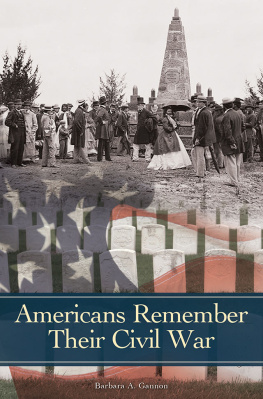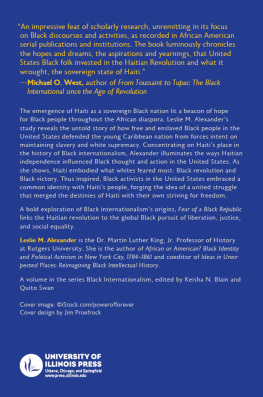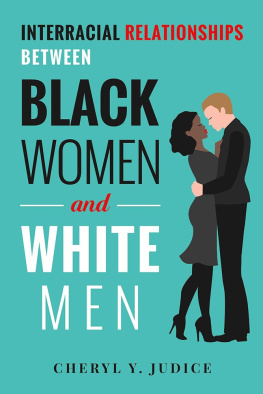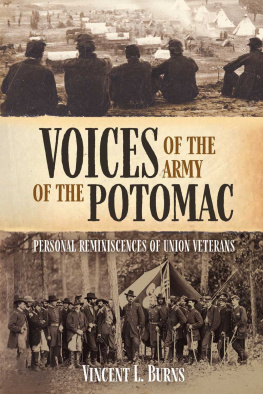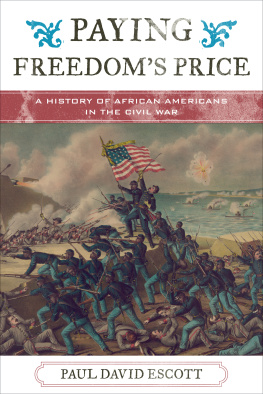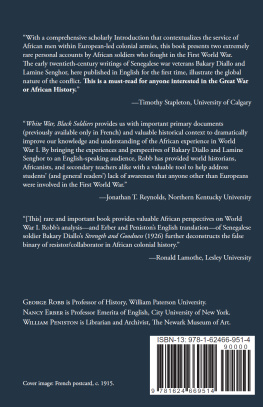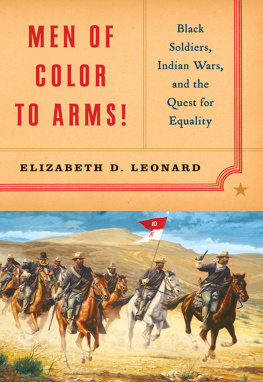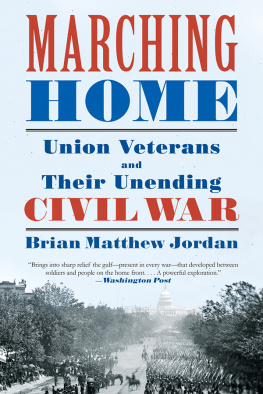THE WON CAUSE
CIVIL WAR AMERICA Gary W. Gallagher, editor
2011 The University of North Carolina Press
All rights reserved. Manufactured in the United States of America Designed by Courtney Leigh Baker and set in Minion Pro by Tseng Information Systems, Inc. The paper in this book meets the guidelines for permanence and durability of the Committee on Production Guidelines for Book Longevity of the Council on Library Resources. The University of North Carolina Press has been a member of the Green Press Initiative since 2003.
Library of Congress Cataloging-in-Publication Data
Gannon, Barbara A.
The won cause : black and white comradeship in the
Grand Army of the Republic / Barbara A. Gannon.
p. cm.
Includes bibliographical references and index.
ISBN 978-0-8078-3452-7 (cloth : alk. paper)
1. Grand Army of the RepublicHistory. 2. United StatesHistoryCivil War, 18611865Societies, etc. 3. United StatesHistoryCivil War, 18611865Veterans. 4. United StatesRace relationsHistory19th century. I. Title.
E462.1.A7G36 2011
369.15dc22
2010045628
cloth 15 14 13 12 11 5 4 3 2 1
For Michael and Eileen Gannon, my parents, of sainted memory
In the darkness of despair we saw a vision,
We lit the light of hope, And it was not extinguished,
In the desert of discouragement we saw a vision,
We planted the tree of valour, And it blossomed.
In the winter of bondage we saw a vision,
We melted the snow of lethargy,
And the river of resurrection flowed from it.
We sent our vision aswim like a swan on the river,
The vision became a reality, Winter became summer,
Bondage became freedom, And this we left to
you as your inheritance.
O generations of freedom remember us,
The generations of the vision.
LIAM MAC UISTIN,
We Saw a Vision, from a plaque at
the Garden of Remembrance,
Dublin, Ireland, dedicated to those who
gave their lives for Irish freedom
Contents
Illustrations
An unidentified African American post in a GAR parade, Washington, D.C., 1892
The Twenty-second USCT advancing against the Confederate lines at Petersburg
Andrew James, an unsuccessful candidate for Pennsylvania junior vice-commander
James W. Wolff, Massachusetts department commander
Philip White, third in command, Kentucky GAR
African American veterans at a reunion of the GAR in Norfolk, Virginia
Edward F. Harris, commander, Post 27 in Philadelphia
Mrs. Mary J. Berry, president of a Woman's Relief Corps unit in Philadelphia
Mrs. Maggie J. Harris, prominent member of the Woman's Relief Corps in Philadelphia
Mrs. William Scott, African American speaker at a New York GAR sencampment
An arch erected by African American citizens in Buffalo, New York, to welcome the GAR's 1897 national encampment
Veterans of the Fifty-fourth Massachusetts parade at the dedication of the memorial to Robert Gould Shaw and the men of their regiment, 1897
Joseph Ozier, integrated post member in Batavia, Illinois
Members of the Welch Post, an integrated post in Ann Arbor, Michigan, circa 1890
African American soldiers capturing guns at Petersburg beside Ohio soldiers
Elizabeth Fairfax, honorary member of the Baker Post, Clinton, Iowa
African American veterans attending the 1913 Gettysburg reunion
A World War I veteran displacing a Civil War veteran, 1919
African American veterans from Louisiana and Mississippi attending a national encampment parade in Denver, 1928
William Singleton, veteran of the Thirty-fifth USCT, 1938
Acknowledgments
Telling the story of the black and white members of the Grand Army of the Republic has been a great honor and privilege. Like most historians, I did not do this alone. While I worked with a number of fine scholars at Penn State, including Bill Blair, Wilson J. Moses, Bill Pencak, Carol Reardon, and Robert Harkavy, Mark Neely deserves special recognition. Every single comment he made, either on the overall direction of this project or on the manuscript, was right on the mark. I did what he told me to do right away, or I did it later, when I realized he was right.
During my graduate studies, the Richards Civil War Center at Penn State came into being, and I thank everyone affiliated with this organization for their support. In addition to scholars at Penn State, I owe a great debt to two historians I met at Penn State who are now at other institutions: Gary W. Gallagher of the University of Virginia and Thavolia Glymph of Duke University. Similarly, I must acknowledge the assistance of a number of scholars in the broader circle of Civil War or African American studies. Joseph T. Glatthaar, Kenneth W. Goings, Don Shaffer, Greg Urwin, and LeeAnn Whites offered valuable suggestions on specific aspects of this study. While I know all of these people and count them as friends, this book also materially benefited from the input of strangers, two anonymous readers. Ultimately, however, I am responsible for any errors of omission or commission in this work.
Within the academy I made a number of lifelong friends. Christine White, Penn State historian emeritus, befriended, housed, and fed me during my sojourn at Penn State. While all Civil War graduate students are comrades, I want to thank Bob Sandow, Mike Smith, and, most especially, Andrew Slap for their friendship and support. Penn State graduate students Tim Wilson and Lynne Fallwell were comrades who stood by me during my most difficult graduate school struggles. Thank you, too, to my new colleagues at the University of Central Florida; their warmth and generosity helped ease my transition to academic life.
I owe debts outside the halls of academia. David Perry of UNC Press urged me on as I completed this project and provided invaluable guidance as I navigated the final stages of the writing process. In addition, I would also like to thank the staff at UNC Press for their patience with a first-time author. It was their hard work and expertise that made this book possible. Before a history book can be published it needs the help of men and women who are guardians of primary source material. I would like to thank the staff of the Library of Congress, archivists at the Iowa and Connecticut state archives and libraries, the Archives of Industrial Society at the University of Pittsburgh, and the staff of the Bentley Historical Library at the University of Michigan for their assistance in my research. I will never forget the kindness of the staff at the Mahoning Valley Historical Society in Youngstown, Ohio. My mother died suddenly during my visit to their archives, and they did everything they could do to support me on that terrible day. After I completed the research on this project, I returned to work at the United States Government Accountability Office (GAO). When all else failed, employment at GAO kept body and soul together and paid the bills. More important than material support, my colleagues at this agency provided emotional succor as I completed the book.
History is the homage the living owe the dead, and, in this spirit, I remember those who never lived to see this study completed. My mother and my father, as we Irish say, of sainted memory are always at my side. While I owe much to all of these men and women, the living and the dead, scholars and friends, my greatest debt is to my brother, Michael, and my sister, Mary, who always believed.
Introduction
The review of the Grand Army of the Republic passed down the broad avenues of Washington, D.C.: tens of thousands of veterans, black and white, marching together in commemoration of northern victory in the Civil War. One newspaper proclaimed, The entire nation unites to celebrate the valor and patriotism of the brave soldiers who fought in defense of the Union. A group of African American veterans was singled out for praise: They marched as they fought, nobly. The white and black spectators watching the parade recognized the colored troops with hearty applause. This was not a description of the Grand Review of the victorious northern army in 1865; black soldiers had not participated in that parade. Instead, in 1892, twenty-seven years after Appomattox, aging former soldiers who belonged to the Union army's largest veterans' organization, the Grand Army of the Republic (GAR), reenacted this review and welcomed African Americans into its ranks.


